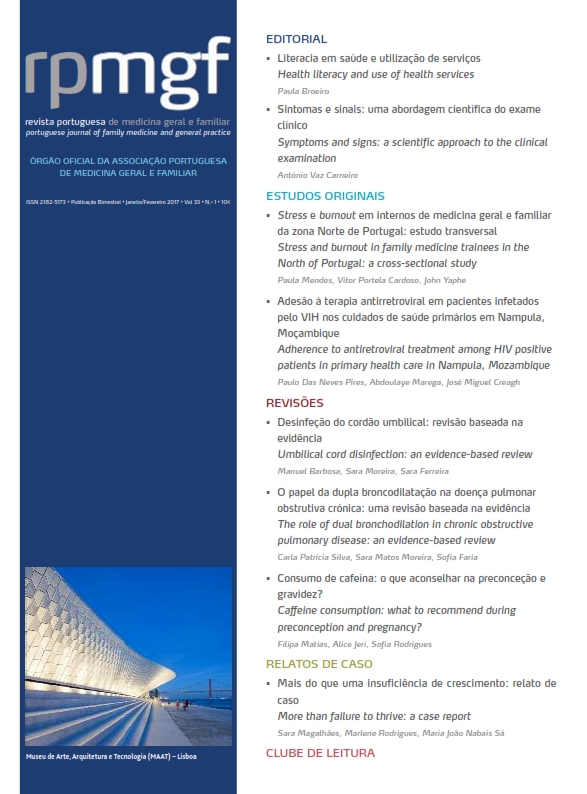Umbilical cord disinfection: an evidence-based review
DOI:
https://doi.org/10.32385/rpmgf.v33i1.12022Keywords:
Chlorhexidine, Disinfectants, Umbilical cordAbstract
Objective: Umbilical cord care differs across cultures. Aseptic technique is generally accepted, although there is much debate on the best treatment. Keeping the umbilical cord stump clean and dry is often neglected. The aim of this study is to determine if umbilical cord disinfection reduces perinatal morbidity of newborns delivered in the hospital setting in developed countries. Data sources: MEDLINE, National Guideline Clearinghouse, NICE Guidelines Finder, Canadian Medical Association Practice Guidelines Infobase, The Cochrane Library, DARE, Bandolier, evidence-based medicine websites and bibliographic references of the selected articles were searched. Revision methods: A study of clinical guidelines, meta-analyses, systematic reviews and randomized clinical trials was carried out. The MeSH terms used were ‘Chlorhexidine’, ‘Disinfectants’ and ‘Umbilical cord’ for studies published between August 2005 and August 2015 in English, Spanish and Portuguese. To evaluate the levels of evidence and strength of recommendations, the Strength of recommendation taxonomy scale of American Academy of Family Physicians was used. Results: The search produced 315 results. Of these, three publications were included. One meta-analysis showed no significant difference in omphalitis with application of antiseptic versus placebo. Two clinical guidelines stated that application of antimicrobials was not superior to dry cord care in preventing cord infection and bacterial colonization. Conclusions: The analysis of the articles selected showed that there is insufficient evidence to advise the use of antiseptics in the care of the umbilical cord of infants born in hospital in developed countries (strength of recommendation A). Dry cord care is recommended. More high quality studies are needed including randomized controlled trials in relevant populations.Downloads
Downloads
Published
Issue
Section
License
The authors will assign to the RPMGF the sole right to publish and distribute the content of the manuscript specified in this declaration via physical, electronic, broadcasting or any other medium that may come into existence. They also grant the RPMGF the right to use and exploit this manuscript, in particular by assigning, selling or licensing its content. This permission is permanent and takes effect from the moment the manuscript is submitted, has the maximum duration allowed by applicable Portuguese or international law and is of worldwide scope. The authors further declare that this assignment is made free of charge. If the RPMGF informs the authors that it is not going to publish their manuscript, the exclusive assignment of rights ceases forthwith.
The authors authorise the RPMGF (or any entity it may appoint) to act on their behalf when it believes that copyright may have been infringed.





